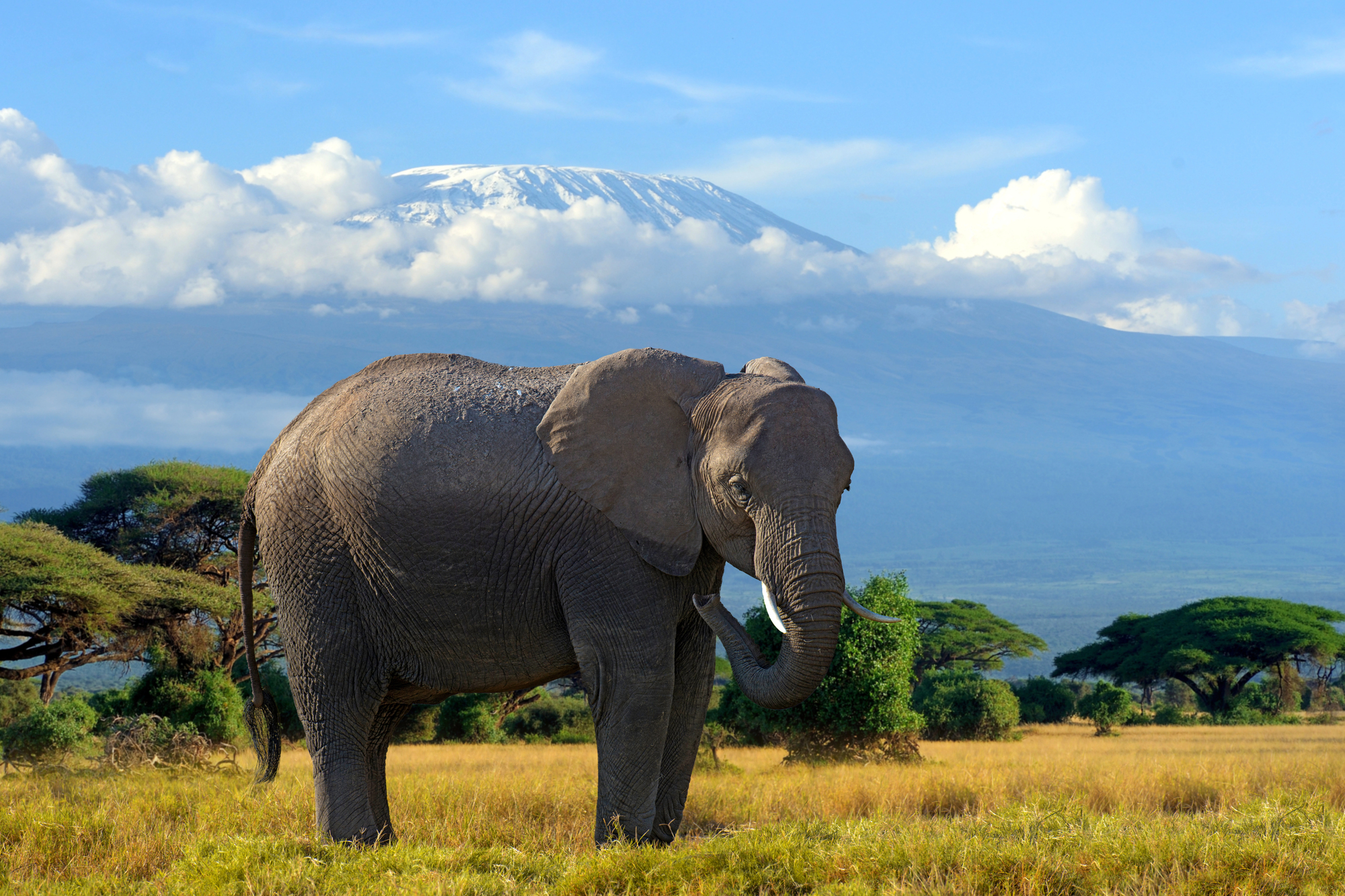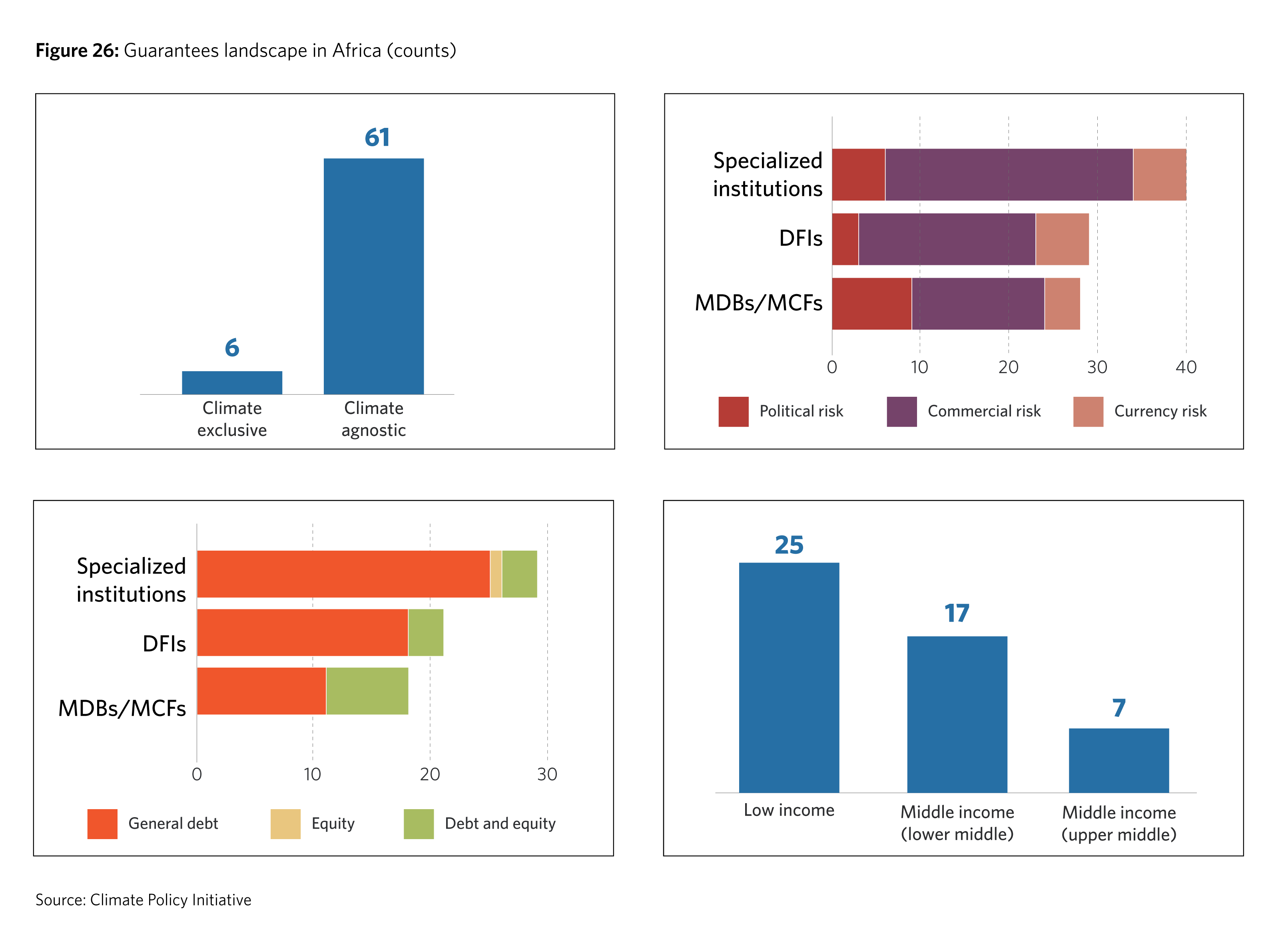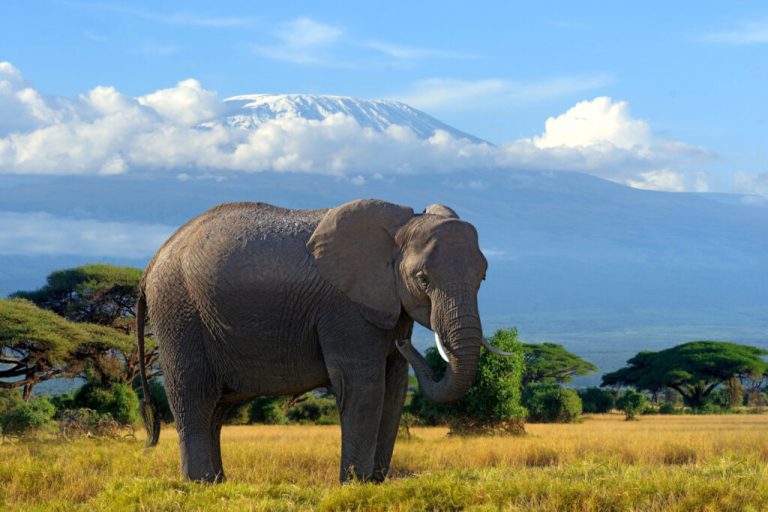
Of the 54 countries in Africa, only two, Mauritius and Botswana, have an investment grade of BBB- or higher.[1]. Most have ratings between B and CCC, which is too high a level of risk for most debt investors. This has pushed up the cost of capital, with CPI rates in high-emitting African countries ranging from 12.8% to 29.5%. Such high costs are a significant barrier to investment in critical climate change programmes.[2]
Although guarantees are the preferred risk mitigation tool and can increase financing mobilization by 25%, they remain underutilized globally.[3]
CPI's Africa Climate Finance Landscape 2024 report shows that total climate finance flows to the continent in 2021/22 amounted to US$44 billion, of which only US$8 billion (18%) came from the private sector. In addition, 10 countries receive 76% of total private climate finance in Africa. Given the huge gap between the continent’s climate finance needs and available funding, catalytic interventions are urgently needed to close the gap. Guarantees provide such a solution.
How can guarantees mobilize private climate finance in Africa?
Guarantees facilitate private climate finance by mitigating risks, thereby lowering the cost of capital, strengthening local debt markets, and diversifying financial products to attract local and international investors.
The current state of guarantees in Africa
We analyzed 67 unique cross-border guarantee mechanisms provided by 27 major entities to international debt and equity investors in Africa between June and July 2024, resulting in the following six insights:

notes: DFI = Development Finance Institution; MDB = Multilateral Development Bank; MCF = Multilateral Climate Fund; Specialized Agencies = Specialized Agencies operate similarly to private sector organizations but are funded by governments and development agencies and often focus on providing specific types of services in specific situations guarantee against risks. For example, Green Guarantees is the first global guarantor dedicated to insuring climate adaptation and mitigation plans in emerging markets and developing economies, including sub-Saharan Africa.
- Only six identified guarantees specifically address climate finance, with a particular focus on renewable energy projects, highlighting the opportunity for more customized climate products beyond renewable energy. The number of climate finance instruments has increased significantly in recent years and can be divided into the following categories:
- Climate Agnosticism: Covers both climate-related and non-climate projects.
- climate–Exclusive: Work on climate-specific measures.
Climate-specific guarantees are designed to address the unique risks and financial structures of climate programs, which are often highly sensitive to currency fluctuations, have long lives and require high capital investment. By explicitly addressing these characteristics, climate-specific guarantees are highly effective in mobilizing climate investments, particularly in African markets. Development finance institutions and multilateral development banks are collaborating to launch specialized facilities to achieve specific climate goals. For example, the African Energy Security Fund[7] Launched in 2018, it aims to enhance the long-term capital of the African energy industry through investment and trade insurance services.
- The guarantees focus primarily on debt investments, reflecting the heavily indebted capital structure typical of African projects. While guarantees can mitigate risks for a variety of players (lenders, debt providers and equity investors), 54 of the guarantees tracked cover debt exclusively, with the remaining 13 covering both debt and equity. This is consistent across all types of guarantee agencies. For example, the Specialized Agency for Promoting Investment in the Financial Sector of Development Financial Institutions offers only 3 products covering equity investments, compared with 25 debt-focused products.
Only one product focuses on equity, which is consistent with findings from CPI's Africa Landscape 2024 survey. Increased climate finance equity investment in Africa.[8].
- Most of the analyzed guarantees cover commercial risk (63), but not political risk (18) and currency risk (16). The situation is concerning as macroeconomic risks significantly outweigh business risks in driving up the capital costs of climate projects in sub-Saharan African countries, many of which face political turmoil and have experienced double-digit losses over the past year. Currency depreciation. Political risk is difficult to predict and quantify, complicating the assessment of risk and return and increasing the cost and complexity of related guarantees. Large multilateral development banks (such as the World Bank through the Multilateral Investment Guarantee Agency) remain the main providers of political guarantees.
- Coverage of guarantee instruments is balanced between low-income African countries (25) and middle-income African countries (24). However, some countries have more guarantee instruments than others. Among middle-income countries, guarantees are concentrated in Kenya, Ghana, Nigeria and South Africa. This may reflect strong investment markets and strategic financing consistent with the development priorities of these national guarantee providers. These countries also have large economies or complex financial markets that require sophisticated risk mitigation tools. Among low-income countries, Mali, Mozambique, Uganda and Rwanda have considerable coverage. This may be due to the efforts of these countries to promote investment, which have a progressive business environment.
- Guarantees across Africa tend to focus on the region’s key development and sustainability goals. The large number of guarantees (17) in the energy sector – including power generation, renewable energy, energy efficiency and rural electrification – reflects the key role of energy in driving regional growth. Paying equal attention to infrastructure and development, 17 guarantees are provided to support activities to improve transport, water, waste management, social infrastructure and affordable housing. In contrast, agriculture and agribusiness activities receive only four guarantees, indicating limited attention to food security and climate adaptation efforts.
- Although guarantees are effective in mitigating risks, the private sector appears reluctant to use them. Some influencing factors include:
- Coverage: Partial credit guarantees cover only a portion of any loss, leaving residual risk. In contrast, 100% guarantees can significantly accelerate private climate investment. Full guarantees are best suited for projects with development potential but lacking direct financial returns, or in markets where private investors are particularly risk-averse. This comprehensive coverage should be used strategically to help build confidence across the industry without precluding private risk-taking.
- Barriers to using guarantees: High transaction costs, lack of standardized pricing, limited product awareness and limited evidence of successful implementation hinder the use of guarantees. In addition, most guarantee instruments are not yet eligible for official development assistance, which creates significant obstacles to their use in bilateral programmes.
- Micro and macro risks: The effectiveness of guarantees in mobilizing private capital also depends on the underlying strength, financing capabilities and sustainability of the project's business model. It also depends on the strength of a country's institutions, regulatory framework and domestic capital markets. A guarantee does not replace these fundamental elements, which are essential for the effective performance of the guarantee.
What type of security is required?
Based on the above, CPI recommends the following actions to improve guarantee rates in Africa:
- Increase equity guarantee: Equity investors, while accustomed to higher business risks, still need to hedge against political and currency risks in Africa. Providing them with more equity guarantees can also increase debt financing flows, as investors prefer financial structures with stronger equity relative to debt. Providing guarantees covering both equity and debt can foster a more balanced and resilient financial ecosystem.
- Target high-emitting countries: We recommend specialized guarantees for the unique challenges of Africa’s high-emitting countries (South Africa, Egypt, Algeria, Nigeria and Morocco), which together account for 37% of the continent’s fossil fuel CO2 emissions2 emission. African countries face the twin demands of economic development and environmental sustainability and require tailored financial instruments to reduce risk profiles and accelerate the adoption of green technologies and practices.
- Expanding climate-focused safeguards: We recommend extending guarantees for climate plans, which often face specific challenges such as increased sensitivity to currency fluctuations, large capital expenditures and long lifespans. More tailored solutions can meet these unique needs.
- Expanding political and currency risk hedging: This improvement is critical to promote more affordable local financing options, thereby reducing perceived and real investment risks for climate projects in Africa, as currently higher capital costs are primarily driven by macroeconomic factors, including currency risks, rather than project-specific risks[9].
[1] Brookings Institution. 2024.
[2] Consumer Price Index. 2023.
[3] A 2022 OECD assessment found that guaranteed leverage accounted for 25% of all private financing mobilized between 2018 and 2020 and was one of the preferred risk mitigation tools for private investors.
See: OECD. 2022. OECD.
[4] World Bank. 2024.
[5] Consumer Price Index. 2024.
[6] Same as above
[7] A collaboration between the European Investment Bank, African Trade Insurance Agency, KfW and Munich Re.
[8] Consumer Price Index. 2024.
[9] Consumer Price Index. 2024.
